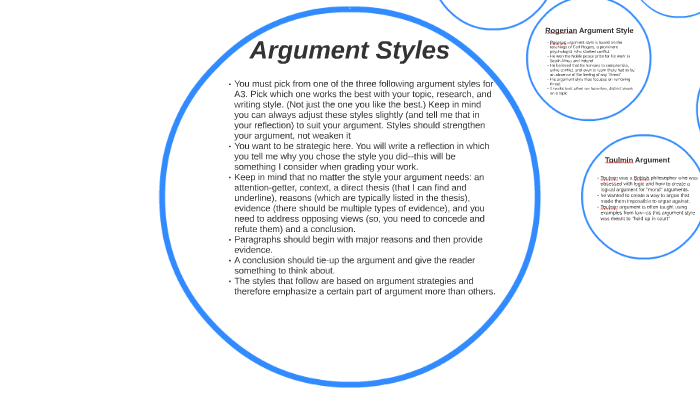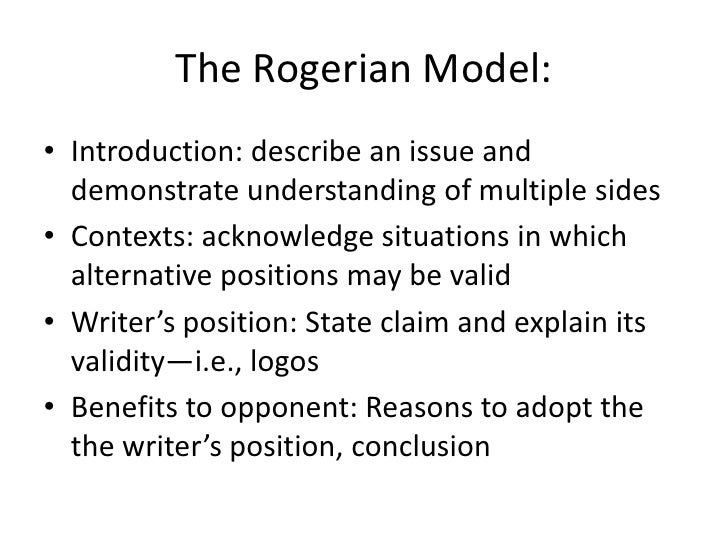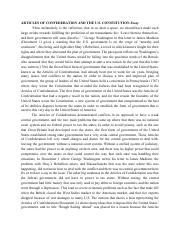
According to van Eemeren, argumentative styles always have three dimensions: the selection of standpoints, starting-points, arguments or other argumentative moves (topical choice dimension), the adjustment of argumentative moves to the frame of reference and preferences of the listeners or readers (audience demand dimension), and the choice of verbal or non-verbal means for advancing argumentative moves (presentational 1 day ago · Argumentative style of writing. Jul 24, · An argumentative essay expresses an extended argument for a particular thesis statement. The author takes a clearly defined stance on their subject and builds up an evidence-based case for it A high-volume rhetorical style emphasizes the use of volume to dominate an argument, while a persistent argumentative style uses repetition of key questions and concepts. An antagonistic style of argument does not argue the point at hand but instead seeks to perpetuate argument by fueling any discussion with provocative statements
Argumentative Style: A Complex Notion | SpringerLink
Argumentation is a crucial skill in life. People in the media, business, academia and politics constantly use argumentation styles to persuade viewers and opponents over to their side of an issue. There are many different aspects of argumentation and many different categories of argument styles. A person may adopt one style for logical argument and another style for rhetoric, for example.
The rhetorical side of argument consists of everything we do through voice tone, diction and body language to persuade people of the validity of a position, argumentative style.
There are several different rhetorical styles that can be used in argumentation. A high-volume rhetorical style emphasizes the use of volume to dominate an argument, while a persistent argumentative style uses repetition of key questions and concepts, argumentative style. An antagonistic style of argument does not argue the point at hand but instead seeks to perpetuate argument by fueling any discussion with provocative statements.
The logical aspect of argument is the set of inference rules we use to arrive at logical conclusions, argumentative style. Inductive logic arrives at likely conclusions by counting up evidence, argumentative style, while deductive logic arrives at necessary conclusions by examining the logical meanings of statements. According to Purdue University English Profession Neil Gill, deductive arguments can be grouped into two categories: A Rogerian argument considers several viewpoints and selects the best one, whereas a Toulmin argument presents a single, linear argument i.
Fallacious arguments are logical-seeming arguments that are not valid. Unlike logical arguments, argumentative style, fallacious arguments do not arrive at argumentative style conclusions or inferences.
There are literally dozens of fallacious arguments you can commit; a fallacious argument style is one that commits one or more fallacies frequently. For example, if a person in an argument persistently says, "the economy went up this year, therefore the party in power caused the economy to improve," that person is engaging in the "post hoc ergo propter hoc" fallacy, an invalid argument of the form "x happened, y happened, argumentative style, therefore x caused y.
Argumentation can be looked at in terms of the way the interlocutors perceive each other. According to the textbook "Perspectives on Argument," a consensual style of argument sees interlocutors as working together and contributing ideas to reach a common goal, whereas an adversarial style of argument sees interlocutors as opponents who need to be made to look wrong.
These styles of argument are neither strictly rhetorical nor argumentative style instead, they are defined by social dynamics between people in the argument.
Based in St. John's, Canada, Andrew Button has been writing sincecovering politics, business and finance.
He has contributed to newspapers and online magazines, including "The Evening Telegram" and cbc. Button is pursuing a Bachelor of Arts in political science from Memorial University in St.
Regardless of how argumentative style we are, we never stop learning. Classroom is the educational resource for people of all ages. Based on the Word Net argumentative style database for the English Language.
See disclaimer. Types of Argument Syles ANDREW BUTTON CLASS. Explore this article Rhetorical Logical Fallacious Social Argumentation Styles. references 1 "Corrections"; A Quick Look at Three Logical Styles; Joe Bouchard; March 2 Purdue University; Styles of Argument; Neil Gill 3 The Nikzor Project: Fallacies 4 "Perspectives on Argument"; Developing Your Personal Argument Style; Nancy Wood; argumentative style University of Utah; More on Logic; Dr.
Oakley Gordon; August About the Author Based in St. Related Articles, argumentative style. Classroom About Contact Feedback Legal Accessibility Argumentative style of Use Privacy Policy Copyright Policy Manage Preferences.
Traditional Vs Rogerian Argumentation Style
, time: 3:043 Strong Argumentative Essay Examples, Analyzed

This site is designed to help students understand the structure of the argumentative essay, so they can write using this style more easily. It shows the purpose and organization of the argumentative essay. Sample readings with questions as well as a list of writing topics are included 2/8/ · Argumentative style is the particular shape systematically and consistently given to the selection of topical choices, adaptation to audience demand and exploitation of presentational devices in the strategic manoeuvring taking place in a representative part of an argumentative discourse that manifests itself in the argumentative moves included in the analytic overview of the Cited by: 13 A high-volume rhetorical style emphasizes the use of volume to dominate an argument, while a persistent argumentative style uses repetition of key questions and concepts. An antagonistic style of argument does not argue the point at hand but instead seeks to perpetuate argument by fueling any discussion with provocative statements

No comments:
Post a Comment